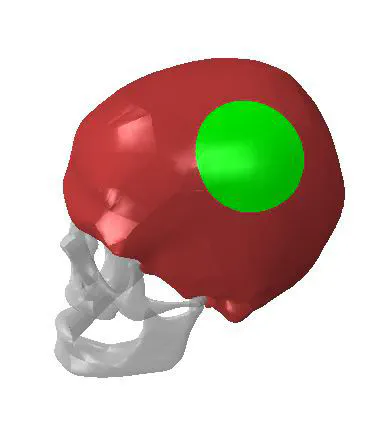 Human head model
Human head modelAbstract
Due to the prevalence of head injuries and the importance of examining this issue in people using cranial implants, a three-dimensional model of the human head was extracted using medical images. After assigning the material properties and boundary conditions and validation with Nahum experimental test results, the implant model was added to the head model. Eight loading scenarios were considered to compare different impact characteristics including momentum, maximum load, and duration as well as load location. The results indicate that impact momentum can not be a good criterion for predicting head injury. Increasing the maximum force and loading time leads to an increase in stress characteristics in the skull and implant. Also, in lateral loading compared to anterior and posterior loadings, the skull and implant experience more stresses and different stress contours. This can be related to the stimulation of the different shape modes in lateral impact compared to posterior-anterior impacts. The results of this study can guide researchers in the design of implants or optimal protective devices against impact to the head.